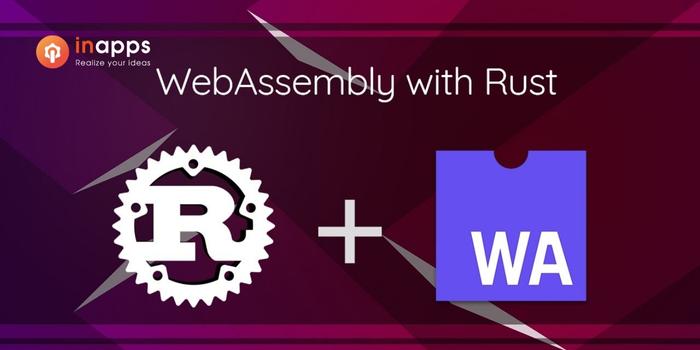- Home
- >
- Software Development
- >
- Could Rust be the future of JavaScript Infrastructure?
Is Rust the future JavaScript Infrastructure?
Originally created by Mozilla, Rust is a fast, reliable, memory-efficient, extremely popular programming language designed for performance and safety.
In fact, it’s been voted the most loved programming language six years in a row in Stack Overflow surveys and is widely used at hyper-scale companies such as Facebook, Apple, Amazon, Microsoft, and Google for systems infrastructure, encryption and virtualization.
Rust is now replacing parts of the JavaScript web ecosystem like minification (Terser), transpilation (Babel), formatting (Prettier), bundling (webpack), linting (ESLint) and more. Let’s dive deeply into why this trend is gaining popularity and wider adoption.
What is Rust?
Rust helps developers write fast software that’s memory-efficient. It’s a modern replacement for languages like C++ or C, focusing on code safety and concise syntax.
Rust is quite different than JavaScript. JavaScript tries to find variables or objects not in use and automatically clears them from memory. This is called garbage collection.
The language abstracts the developer from thinking about manual memory management. With Rust, developers have more control over memory allocation without it being as painful as C++.

“Rust uses a relatively unique memory management approach that incorporates the idea of memory ‘ownership’. Basically, Rust keeps track of who can read and write to memory. It knows when the program is using memory and immediately frees the memory once it is no longer needed. It enforces memory rules at compile time, making it virtually impossible to have runtime memory bugs. You do not need to keep track of your memory manually. The compiler takes care of it.” — Discord
Adoption
On top of the companies mentioned above, Rust is also being used for popular open source libraries like:
“Rust has been a force multiplier for our team, and betting on Rust was one of our best decisions. More than performance, its ergonomics and focus on correctness has helped us tame sync’s complexity. We can encode complex invariants about our system in the type system and have the compiler check them for us.” — Dropbox
From JavaScript to Rust
JavaScript is the most widely used programming language, operating on every device with a web browser. Over the past 10 years, a massive ecosystem has been built around JavaScript:
- Webpack: Developers wanted to bundle multiple JavaScript files into one.
- Babel: Developers wanted to write modern JavaScript while supporting older browsers.
- Terser: Developers wanted to generate the smallest possible file sizes.
- Prettier: Developers wanted an opinionated code formatter that just worked.
- ESLint: Developers wanted to find issues with their code before deploying.
Millions of lines of code have been written, and even more bugs have been fixed to create the bedrock for shipping web applications of today.
All of these tools are written with JavaScript or TypeScript. This has worked well, but we’ve reached peak optimization with JS. This has inspired a new class of tools designed to improve the performance of building for the web drastically.

SWC
SWC, created in 2017, is an extensible Rust-based platform for the next generation of fast developer tools. It’s used by tools like Next.js, Parcel, and Deno, as well as companies like Vercel, ByteDance, Tencent, Shopify and more.
SWC can be used for compilation, minification, bundling and more — and is designed to be extended. It’s something you can call to perform code transformations (either built-in or custom). Running those transformations happens through higher-level tools like Next.js.
Deno
Deno, created in 2018, is a simple, modern and secure runtime for JavaScript and TypeScript that uses V8 and is built with Rust. It’s an attempt to replace Node.js, written by the original creators of Node.js. While it was created in 2018, it didn’t hit v1.0 until May 2020. Deno’s linter, code formatter, and docs generator are built using SWC.
esbuild
esbuild, created in January 2020, is a JavaScript bundler and minifier 10-100x faster than existing tools written in Go.
“I’m trying to create a build tool that a) works well for a given sweet spot of use cases (bundling JavaScript, TypeScript, and maybe CSS) and b) resets the expectations of the community for what it means for a JavaScript build tool to be fast. Our current tools are way too slow in my opinion.” — Evan, creator of esbuild
Building JavaScript tooling with systems programming languages, like Go and Rust, was fairly niche until esbuild was released. In my opinion, esbuild sparked a wider interest in trying to make developer tools faster. Evan chose to use Go:
“The Rust version probably could be made to work at an equivalent speed with enough effort. But at a high level, Go was much more enjoyable to work with. This is a side project and it has to be fun for me to work on it.” — Evan, creator of esbuild
Some argue Rust could perform better, but both could achieve Evan’s original goal of influencing the community:
“Even with just basic optimization, Rust was able to outperform the hyper hand-tuned Go version. This is a huge testament to how easy it is to write efficient programs with Rust compared to the deep dive we had to do with Go.” — Discord
Rome
Rome, created in August 2020, is a linter, compiler, bundler, test runner, and more for JavaScript, TypeScript, HTML, JSON, Markdown, and CSS. They aim to replace and unify the entire frontend development toolchain. It’s created by Sebastian McKenzie, who also created Babel.
Why rewrite everything, then?
“Making the necessary modifications to Babel to allow for it to be a reliable base for other tools would have required changes to absolutely everything. The architecture is bound to the initial design choices I made in 2014 when I was learning about parsers, ASTs, and compilers.” — Sebastian McKenzie
Rome is currently written in TypeScript and runs on Node.js. But they’re now working on rewriting in Rust using RSLint parser and their own visitor system for AST traversal.
NAPI
Rust’s integration with Node.js is better than other low-level languages. napi-rs allows you to build precompiled Node.js add-ons with Rust. It provides an out-of-the-box solution for cross-compilation and publishing native binaries to NPM, without needing node-gyp or postinstall scripts.
You can build a Rust module that can be called directly from Node.js without needing to create a child process like esbuild.
Rust + WebAssembly

Is Webassembly faster than Javascript?
WebAssembly (WASM) is a portable low-level language that Rust can compile to. It runs in the browser, is interoperable with JavaScript and is supported in all major modern browsers.
“WASM is definitely a lot faster than JS, but not quite native speed. In our tests, Parcel runs 10-20x slower when compiled to WASM than with native binaries.” — Devon Govett
While WASM isn’t the perfect solution yet, it can help developers create extremely fast web experiences. The Rust team is committed to a high-quality and cutting-edge WASM implementation.
For developers, this means you could have the performance advantages of Rust (versus Go) while still compiling for the web (using WASM).
Some early libraries and frameworks in this space:
These Rust-based web frameworks that compile to WASM aren’t trying to replace JavaScript but work alongside it. While we aren’t there yet, it’s interesting to see Rust coming after the web on both sides: making existing JavaScript tooling faster and future-forward ideas for compiling to WASM. It’s Rust all the way down.
Why Not Rust?
Rust has a steep learning curve. It’s a lower level of abstraction than what most web developers are used to. Once you’re on native code (through Rust, Go, Zig, or other low-level languages), the algorithms and data structures are more important than the language choice. It’s not a silver bullet.
“Rust makes you think about dimensions of your code that matter tremendously for systems programming. It makes you think about how memory is shared or copied. It makes you think about real but unlikely corner cases and make sure that they’re handled. It helps you write code that’s incredibly efficient in every possible way.” — Tom MacWright
Further, Rust’s usage in the web community is still niche. It hasn’t reached critical adoption. Even though learning Rust for JavaScript tooling will be a barrier to entry, interestingly developers would rather have a faster tool that’s harder to contribute to. Fast software wins.
Currently, it’s hard to find a Rust library or framework for your favorite services (things like working with authentication, databases, payments and more).
I think that once Rust and WASM reach critical adoption, this will resolve itself. But not yet. We need existing JavaScript tools to help us bridge the gap and incrementally adopt performance improvements.
The Future of JavaScript Tooling

Is rust the future of Javascript?
I believe Rust is the future of JavaScript tooling. Next.js 12 started our transition to fully replace Babel (transpilation) and Terser (minification) with SWC and Rust. Why?
- Extensibility: SWC can be used as a Crate inside Next.js without having to fork the library or work around design constraints.
- Performance: We achieved ~3x faster Fast Refresh and ~5x faster builds in Next.js by switching to SWC with more room for optimization.
- WebAssembly: Rust’s support for WASM is essential for supporting all possible platforms and taking Next.js development everywhere.
- Community: The Rust community and ecosystem are amazing and only growing.
It’s not just Next.js adopting SWC, either:
“Parcel uses SWC like a library. Before we used Babel’s parser and custom transforms written in JS. Now, we use SWC’s parser and custom transforms in Rust. This includes a full scope hoisting implementation, dependency collection, and more. It’s similar in scope to how Deno built on top of SWC.” — Devon Govett
It’s the early days for Rust — a few important pieces are still being figured out:
- Plugins: Writing plugins in Rust isn’t as approachable for many JavaScript developers. At the same time, exposing a plugin system in JavaScript could negate performance gains. A definitive solution hasn’t emerged yet. Ideally, the future combines both JavaScript and Rust. If you want to write a plugin with JavaScript, it’s possible with a tradeoff for speed. Need more performance? Use the Rust plugin API.
- Bundling: One interesting area of development is, which is SWC’s replacement for webpack. It’s still under development but could be very promising.
- WebAssembly: As mentioned above, the prospect of writing Rust and compiling to WASM is enticing, but there’s still work to be done.
Conclusion

Rust’s popularity will continue to grow and significantly influence the JavaScript ecosystem for the foreseeable future. Imagine a world where all the build tools used in Next.js are written in Rust, giving you optimal performance. Next.js could be distributed as a static binary you’d download from NPM. That, to me, would be an ideal world to live (and develop) in.
To get the best Rust developers to work for you, connect with InApps.
List of Keywords users find our article on Google
[sociallocker id=”2721″]
| will webassembly replace javascript |
| node-gyp |
| парсер hotline |
| javascript future 2022 |
| rust base design |
| mozilla rust |
| hire babel developers |
| rust plugins |
| tommy robinson telegram |
| rome to ho chi minh city |
| esbuild |
| hyperscale infrastructure |
| node gyp |
| rust javascript |
| dropbox js |
| dropbox rust |
| rust discord |
| shopify template variables |
| parcel js |
| future of javascript 2022 |
| rust community market |
| how to apply rust bullet |
| rust best base design |
| email parser dropbox integration |
| zig memory safety |
| zig memory system writer |
| rust labs |
| telegram tommy robinson |
| hire markdown developers |
| swc jobs |
| tweet formatter |
| rust static variables |
| eslint complexity |
| learning rust |
| cpp lower bound |
| rust adoption 2022 |
| future of typescript |
| can webassembly replace javascript |
| deno vs node performance 2022 |
| javascript is the future |
| deno swc |
| zig vs rust |
| rust wikipedia |
| deno popularity |
| vercel hyper |
| free rust scripts |
| future of javascript |
| rust base desing |
| business vision consulting devon |
| facebook email parser |
| facebook linter |
| free scripts rust |
| parcel npm |
| rust for javascript developers |
| shopify developer linkedin |
| babel profiles |
| rust to rome 2022 |
| rusty discord |
| rust parser |
| swc compiler |
| zig memory system |
| javascript rust |
| deno webassembly |
| rust optimization |
| rust hyper |
| rust syntax |
| parcel bundler |
| parcel-bundler |
| swc wasm |
| rust custom designs |
| rust static |
| whatsapp 2.0 shopify |
| rust team discord |
| @typescript-eslint/eslint-plugin |
| deno rust |
| javascript sendrequest |
| child process in node js |
| rust base building website |
| eslint parser typescript |
| facebook парсер |
| fb linter |
| rust plugin system |
| shopify dropbox integration |
| prettier nodejs |
| rust webassembly framework |
| sync ergonomics |
| rust bullet |
| парсер фб |
| rust deep learning |
| test generator rust |
| deno performance |
| hire rust developer |
| prettier node js |
| recruitment consultant devon |
| rust build designs |
| modern essentials app |
| rust api framework |
| npm prettier |
| rust for web api |
| rust for web development |
| rust scripts |
| babel eslint parser |
| парсер фейсбука |
| nextjs prettier |
| node js gyp |
| rust file system |
| precompiling |
| node js development company |
[/sociallocker]
Let’s create the next big thing together!
Coming together is a beginning. Keeping together is progress. Working together is success.


















